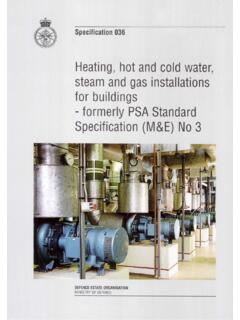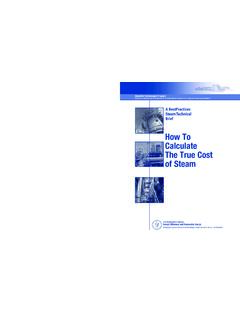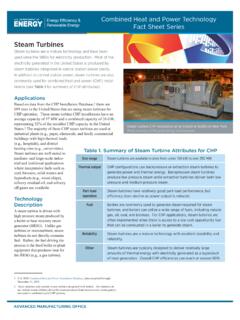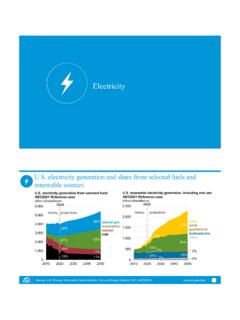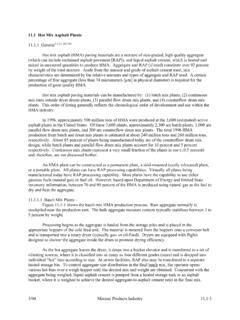Transcription of Laundry Planning Handbook - bandctech.com
1 GasCeilingReuse WaterHot WaterCold WaterElectrical - 15 amp circuit breackerAbove Floor Trough 12 x 24''Safety Overflow24'' x 72'' Air Intakefor each machineElectrical - 15 amp circuit breackerfor each machineREUSE SYSTEMREUSE HOTCOLDELECTRICMain Gas Line 1 1/2''1 1/2''3/4'' to each dryerOverflowFrom reuse drainLaundry PlanningHandbookB&C TechnologiesPanama City, FL(850) 249-2222(850) 249-2226 of ContentsCalculations and FormulaeCylinder VolumeG-ForceWater DataMoisture RetentionWater HeatersElectricityGas DataBoiler HorsepowerLaundry SizingSizing Washer-ExtractorsSizing DryersSizing Water HeatersSizing Water SoftenersSizing Air CompressorsSizing BoilersSizing Drain TroughsWater Consumption DataLaundry Cart SizingPlanning Check List55556667788101111111212131415B&C TechnologiesPanama City, FL(850) 249-2222(850) 249-2226 VolumeVolume measures the physical size of cylinder (or basket).
2 It is the best way to compare rated capacities of competitive machines. The larger the volume, the more Laundry the machine's cylinder can hold. It is calculated as follows:2 * R (radius of cylinderin feet squared) x depth of cylinder / 1728 = volume of cylinder in cubic accepted capacity for washer-extractors is between 5 and 7 lb. per cubic foot. Accepted capacity for dryers is between and lb. per cubic foot. Volume refers to the available area within the basket or cylinder of the washer. Here are some relationships between volume in cubic feet, gallons and cubic foot = gallons = cubic foot = gallons = litersG-ForceG-Force is a relative measurement used to compare a washer's extraction capabilities (spin speeds).
3 Higher G-forces lead to less water being left in the goods after the wash program is complete, leading to shorter drying times and reduced energy consumption to dry the goods. Comparatively, higher RPM's relate to higher G-Force when the cylinder size is similar. However, larger diameter cylinders can spin slower, yet attain a higher G-Force than smaller diameter cylinders. Here's the formula to calculate G-Force:2 RPM x diameter (inches) / 70,500 = "G" ForceWater DataHere is some specific data on water:About 50-60% of water used in a typical Laundry formula is hot(if a conventional water system is used).1 cu. ft. of water = lb. 1 cu. ft of water = gallonsgallon(s) x .1336 = cubic feet gallon(s) x 231 = cubic inchesCalculations and Formulae5pound of water x.
4 016 = cubic foot pound of water x .12 = gallonso1 gallon = lb. @ 62 degrees Fahrenheit (F)ooBoiling water = 212 Fahrenheit (F) = 100 Celsius (C)ooFreezing water = 32 Fahrenheit (F) = 0 Celsius (C)ooTo convert to F; multiply C by 9, divide by 5, and add convert to C; subtract F by 32, multiply by 5, and divide by RetentionMoisture retention measures the water extracted from the load. The more water removed from the load, the less drying time is required, thereby reducing drying times and saving energy. Too much water removal, however, can damage fabrics. A certain amount of water retention is required for finishing procedures. To calculate moisture retention, use the following formula:Weight after extraction - dry weight / dry weight = Moisture Retention (%)Water HardnessMore tallow soap is required for washing in hard water than in soft water.
5 A water softener may be required if grains/gallon of hardness exceed Hardness definitions:Grains/Gallon Parts/Million Descriptionless than less than to to 60 slightly to 61 to 120 moderately to 121 to 180 & over 181 & over very hardElectricityhorsepower x .7457 = kWwatt/hour x = BTU1 kWh = 3413 BTU = 1 kW x number of hours operatedTo calculate approximate electrical consumption, use the following formula for each motor Calculations and Formulae6in the Laundry (then total the results for all motors):V x I x x PF /1000 x # of hours operated per day = kW/daywhere: V = voltage (volts); I = current (amps); PF = power factorAs a rule of thumb, assume motors are running under a constant load, yeilding a power factor of about Inverter driven equipment typically has a power factor of DataA BTU is the amount of heat required to raise one pound of water approximately one odegree Fahrenheit (F):> one Therm (TH) = 100,000 BTU> one cubic foot = 1,000 BTU ( )> one MCF (1,000 cubic feet) = 10 Therms ( )> one cubic foot of Butane gas = 3,200 BTU> one gallon No.
6 2 diesel fuel oil = 139,500 BTU (approx.)> one gallon No. 6 fuel oil = 149,000 BTU (approx.)> one kilowatt (kW) = 3,415 BTU> one gallon propane = 92,000 BTUGas cost : The cost of gas is usually stated in the price per therm or price per M or MCF (1,000 cubic feet). In computing costs, the actual total to the end user should be used, and divided by the number of therms used to find the cost per therm. Various rate structures are used by local gas suppliers. These include " straight line" rates, and "block" rates in which the rate varies for various quantities. Additional charges such as "demand charge", "commodity charge", or "service charge" may also be part of the gas cost. Any charge the customer may pay to receive gas, including sales tax where applicable, should be included in the total gas cost from which the actual cost per therm is Horsepoweroone BHP = the work of converting lb.
7 Of water (at 212 F) per hour to steam at 0 lb. gauge BHP = 33,500 BTU/hrone BHP = BHP = kilowattsCalculations and Formulae7 Laundry SizingSizing Washer ExtractorsMotels/Hotels and Resortsone bed per room in economy hotel:8 x rooms x 7 days x occupancy % / 40 hours = beds per room in economy hotel:14 x rooms x 7 days x occupancy % / 40 hours = bed per room in luxury hotel or resort:11 x rooms x 7 days x occupancy % / 50 hours = beds per room in luxury hotel or resort:20 x rooms x 7 days x occupancy % / 50 hours = larger facilities, increase poundage because of pool, spa, fitness, banquet and/or dining facilities used by both guests and non-guests. Use the following guidelines:Restaurant & Banquet items: lb per coverTerry Robes: lb per room per dayPool/Spa towels: up to 2 lb per itemIf the double occupancy rate is known, multiply the lb/hr rate the double occupancy increase:Double Occupancy increase = 1 + x Double Occupancy RateAssume Laundry to process - loads per hour.
8 Nursing Homes50 x number of beds / hr. = includes patient clothing in the average home. If a higher number of incontinent patients, increase the per bed per week poundage to 60 Laundry to process - loads per hour. Hospitals15 x number of beds x 7 days / hr. = Laundry to process - loads per the division of work, assume 60% flat work ( : sheets), 40% fluff/dry. Correctional Facilities6 x number of inmates x 7 days / 50 hours = Laundry to process loads per hour. Shirt Laundry / Dry Cleaning Plant1/2 number of shirts/day x 6 days / 40 hours = washer to process - loads per SizingItemWeight, , , , bed bed (waiter) (waitress) Cloth (54" x 54") (bibbed) Cloth (54" x 96") (waist) Cloth (45" x 45") (shop) Cloth (64" x 64") , cover (54" x 120") , flame (20" x 20") , towel (17" x 26") , Towel (24" x 44") , patient' cloth (12" x 12") , Mat (terry) Mat (heavy) , chef' (84" x 110") , (84" x 118") , (60" x 76") (baby) (cotton) (blend) (freezer) sheet (63" x 99") mop, 36" gear gear gear gloves (leather)
9 Nomex station duty station duty station workout sweat station workout Dry Weights9 Sizing DryersDryer should be of larger capacity than corresponding washer-extractor. Estimate between and times washer-extractor capacity. ( : a 65 lb. washer requires approximately a 75 lb. dryer).Average loads per hourgas fired = 2steam heated = heated = 1In general, the - capacity rule applies to washer with high spin speeds (g-force greater than 200 G s). If low or medium speed (80-180 G s) are used, a dryer to washer ratio should be 2:1. Thus, a 50 lb. washer would require a 100 lb. dryer. If part of the volume of Laundry is to be ironed, dryer capacity can be for drying a load can be estimated with the following formula: (Load weight, lbs) x (% water retention) x (2500 BTU/lb)Drying time (hrs.)
10 = (BTU per hour rating of dryer)Under ideal conditions, it takes about 1200 BTU to evaporate 1 pound of water. Since a dryer is not 100% efficient, we use 2500 BTU/lb to make up for any is usually best to enclose the dryers to separate the make up air supply. This is especially true if the Laundry will have air conditioning or some other environmental control. Dryer enclosures provide two significant benefits:>The dryers will not use conditioned air from the room for make-up air. This will reduce operating expenses, since the dryer is not taking cooler room air and heating it to 160 to 180 degrees.>Heat emission is reduced by up to 80%. A good rule of thumb is that a dryer will emit 2% of its rated BTU s through each exposed face.


